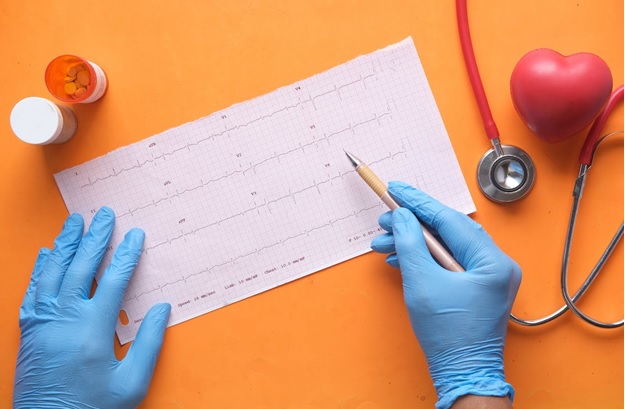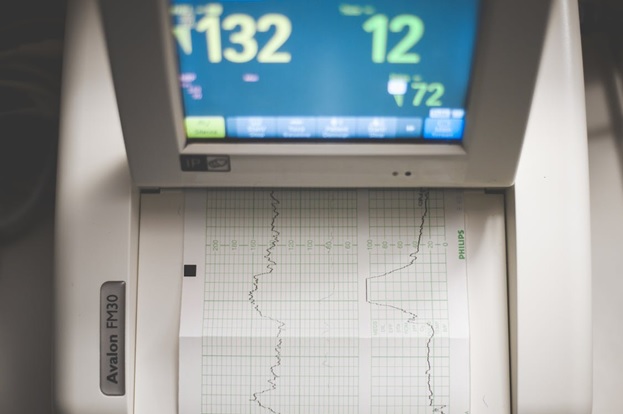For over 50 years, LifeSync, formerly Rochester Electro-Medical, has been dedicated to providing the highest quality EMG, electrosurgical and ECG cables and lead wires, and other electro-medical accessories.
However, even with the highest-quality electrical equipment and recording devices, aberrations, also known as “artifacts” in electrocardiography, can still occur. The following are some common causes and what you may be able to do to help prevent them and guarantee a high-quality ECG recording.
Causes of Artifacts in Electrocardiography
Artifacts in electrocardiography are recognized electrical alterations that show up in an ECG recording but which are not attributable to the electrical activity of the heart.
They can substantially compromise the integrity of the recording and make it difficult to interpret. Worst of all, they can have many causes.
Some of the most common causes of artifacts are motion artifacts, generally caused by the patient moving, either involuntarily or accidentally. Some motion artifacts have no apparent cause.1
Some motion artifacts can also be caused by apparent conditions, including but not limited to Parkinson’s Disease, multiple sclerosis, or hyperthyroidism. A wide range of drugs can also cause motion artifacts, including but not limited to methamphetamines, lithium, and benzodiazepines.1
Motion of the skeletal muscles, voluntarily or not, can substantially compromise the ECG recording with aberrant electrical activity - so diminishing the effects of motion and muscle artifacts (see below) is critical.
With that said, artifacts can be caused by a wide range of other factors, including the electrodes themselves. Improper electrode placement, missing electrodes, and compromised lead wires can also induce artifacts.
Another common cause of ECG artifacts is electromagnetic interference, also known as EMI. EMI can be caused by a wide range of sources, but the most likely culprits are competing electrical devices located in the vicinity.
Implanted stimulators and pacemakers can also cause artifacts, as can improper skin preparation techniques.2, 3
Identifying the cause of artifacts is one of the most effective ways to mitigate them.
How to Minimize Artifacts in ECG Recordings
Skin preparation and the proper use (and placement) of ECG electrodes are two of the most straightforward ways to minimize the incidence of artifacts in ECG recordings.
Placement of electrodes and correct ECG lead wire positioning are paramount to a successful recording. Ensure you are placing electrodes in the right lead position, as accurately as possible. Where applicable, do not attach electrodes over large muscles, deposits of adipose tissue, or bony prominences.
Hair can also prevent proper electrode adhesion, so shave or clip it prior to attaching the electrodes. Oil and sweat can also prevent proper adhesion, and stretching the skin can create motion artifacts, too.

Clean the patient’s skin with rubbing alcohol and swab dry with gauze. Skin abrasion can minimize motion artifacts; be sure also that the electrodes have been properly prepared with conductive gel before applying.
Make sure your crocodile clips are clean. They should be cleaned before every test to prevent a buildup of gel that will affect conductivity. Also, make sure the ECG lead wires are properly positioned. Do not allow lead wires to form loops or contact metal, which can impair the recording.
While skin prep and proper electrode placement will help minimize motion artifacts, they will not prevent muscle artifacts.
To help minimize muscle artifacts, ensure that the patient is lying flat, is comfortable, is not moving, and that his or her limbs are supported. If the patient is cold, consider offering a blanket to help reduce shivering. If shivering is the culprit and you believe the suspect electrode is the RA or LA lead, move the electrode on the limb to avoid the muscle group that might be causing the muscle artifact.
Intermittent cable failure can also be a cause of artifacts in ECG recordings. Try a different cable if you suspect this as the cause. If you suspect a missing lead, check that all leads and electrodes are properly attached.
EMI, which can arise from a variety of sources, can also be a cause of artifacts. Before the procedure, have the patient remove or switch off all personal electronic devices such as smartphones which can cause artifacts.
Other external sources in the room may be a cause of EMI; if you can identify the source, shut it off if possible, and if not, move it. Relocating the source of EMI produces an inverse relationship with artifacts. Increasing the distance produces a tenfold reduction EMI for each unit of distance that the source is moved farther away.

Artifacts caused by implanted medical devices can be more difficult to address, but there are still ways around them. For instance, if you suspect an implanted device to be the cause of high-frequency spike artifacts, consider changing the upper cutoff frequency if you want to make the spikes more visible.
One last recommendation, although it does not directly have to do with electrode application, implanted devices, or EMI, is to keep the patient as calm as possible. Stress, anxiety, and fear can all alter the heart rate which will impair recordings. Do your best to provide a calming environment and instruct the patient to remain still during the procedure.
High Quality, ECG Trunk Cables and Lead Wires
One of the keys to recording ECGs is to use ECG trunk cables, lead wires, and electrodes of high quality.
In addition to properly placing the leads, preparing the patient, minimizing motion and muscle artifacts and locating and removing potential sources of EMI, the use of high quality electrodes, leads and cables can help ensure high-quality recordings.
We carry a wide range of ECG trunk cables, color-coded 3, 5, and 10 lead ECG wires, and even radiolucent ECG lead wires of the highest quality.
Check our collections via the links above and get in touch with us directly at 1-800-358-2468 if you have any questions.
Sources
- Pérez-Riera AR, Barbosa-Barros R, Daminello-Raimundo R, de Abreu LC. Main artifacts in electrocardiography. Ann Noninvasive Electrocardiol. 2018 Mar;23(2):e12494. doi: 10.1111/anec.12494. Epub 2017 Sep 20. PMID: 28940924; PMCID: PMC6931710.
- Littmann L. Electrocardiographic artifact. J Electrocardiol. 2021 Jan-Feb;64:23-29. doi: 10.1016/j.jelectrocard.2020.11.006. Epub 2020 Nov 30. PMID: 33278776.
- Greutmann M, Horlick EM. Uncommon cause for a common electrocardiographic artifact. Can J Cardiol. 2010 Jan;26(1):e30. doi: 10.1016/s0828-282x(10)70344-5. PMID: 20101367; PMCID: PMC2827235.

